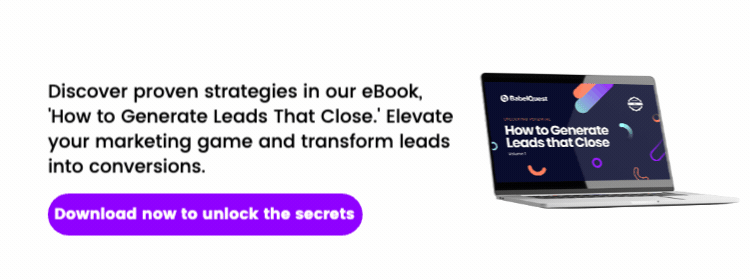The future is rarely clear. What does the future of inbound marketing look like and what does it mean for the way you attract and engage new leads for your business?
The strategy behind inbound is creating content that people will love, attracting visitors to your website rather than having to chase potential customers, which can be seen as aggressive, therefore putting them off your company and its products or services.
Research suggests you get up to 54% more leads when using inbound marketing vs outbound. Old marketing techniques such as cold calling are becoming less popular among organisations because calls and adverts can be blocked due to advanced technology, therefore becoming less effective.
Inbound is the future for marketing successfully, but what is the future of inbound marketing? The answer can be predicted by looking backwards, not forwards, to inbound marketing's roots.
What is inbound marketing and how can you get started?

Consumer trust and a little thing called word of mouth
Today's buyers can smell sales and marketing tactics a digital mile off. And they don't smell good. To put this another way, your consumer base doesn't trust your corporate messaging. If they think you're trying to promote or sell a product to them, they will disengage. But this doesn't mean they can't still be reached.
Instead of trusting in marketing collateral and sales pitches, we look to our friends and colleagues for advice and recommendations. The same technology that has driven connectivity and enabled inbound marketing methods has also made it easier than ever to communicate with one another. Across B2B and B2C, we're doing exactly that to find reviews we trust and companies our inner circle recommends to us.
What does the future of inbound marketing look like?
If the potential customer purchases your products or services and if you deliver the quality experience they are expecting, there's a greater chance of them referring your offerings to others. Your customers become your advocates, spreading word of mouth and brand trust at a time when this has never been more crucial. Customer satisfaction is key to generating more business.
Forming a relationship between your organisation and the person you’re dealing with is essential as you want them to feel special, not just one of the many customers you may deal with.
Satisfying your clients means knowing them
Before you start marketing your product or service you must know your client base, what your clients want, and how to satisfy their needs. You should create a customer persona that allows you to understand your client.
A customer persona (or buyer persona) is a semi-fictional representation of your ideal customer based on market research and real data about your existing customers.
- A buyer persona profile should include information about who your ideal customer is, as well as their background, demographics, goals, and challenges
- In addition, the buyer persona profile will help you spot consumer patterns to help you market your product or service
If you attract the right audience you are more likely to boost sales and increase revenue. On the other hand, if you don’t attract the right people then you will be wasting your time marketing to an audience who won’t be interested in what you’re selling, therefore it's important you do your research on your buyer personas.
Delighting your customers across sales, marketing, and customer service
The third stage of the inbound methodology is delight; existing customers can’t be forgotten about but instead delighted with good service and offers. If you provide an outstanding product with an equally outstanding customer service then they might refer your business to others, which will help spread your brand's popularity.
This could potentially increase the number of customers your business may have so it is very important to delight all clients at all times, no matter of where they sit in the buyer’s process.
The attract stage is about drawing strangers to your site and providing them with value by creating content that they find interesting or helpful. One example of delighting your prospects at the attract stage is using standout content that speaks to their precise problems or challenges and offers genuine value to the reader.
To delight at the engage stage, consider personalising the emails you send to them. Address each recipient by their real name (easier than ever with marketing automation) or strike a more conversational tone. Could you link to other, non-gated resources in the email to provide value? Small changes like this can go a long way.
Want to build stronger relationships with your existing database? Learn more about the eight pillars of delight.
The future of marketing in the Age of the Customer
Inbound marketing is all about making content that people will love and letting the customer come to you, not chasing or harassing them. The content you produce must meet the needs of your buyer personas.
if you do this then you’ll get an endless amount of potential customers to help grow your business. Inbound is leading the way for effective marketing results, but the future of inbound means taking care of those customers and exceeding their expectations — at every interaction.
Interested in learning more about inbound marketing and how you can use it to generate predictable, repeatable revenue growth for you business? Download our free, 80-page ebook below to find out more.







.png?width=50)

.png?width=50)
.png?width=50)



































